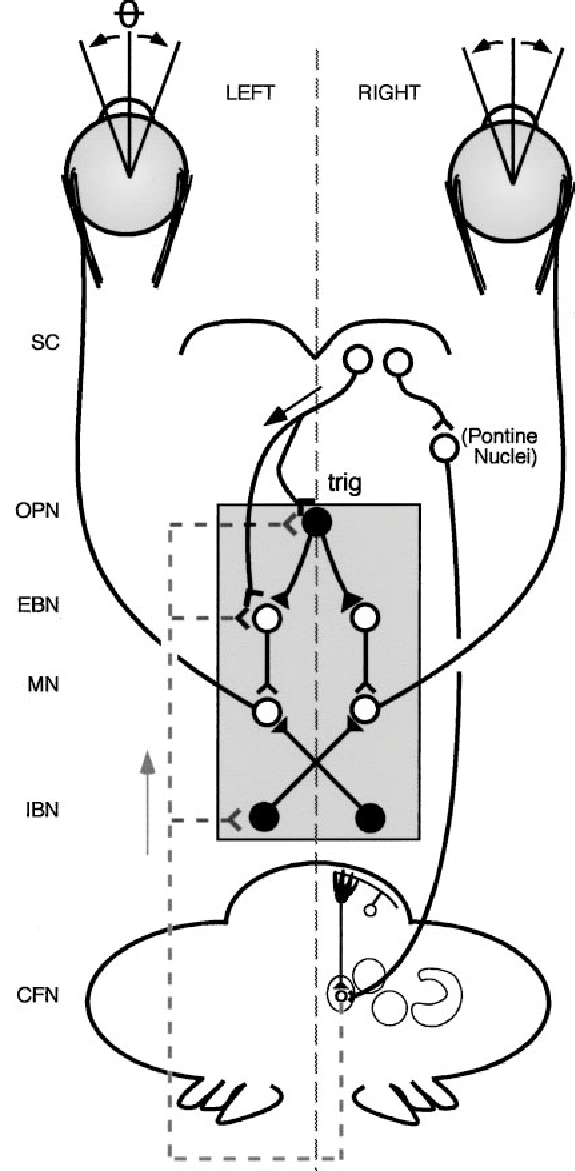The Cerebellum, Pt. 3: How to fix a stiff back with your eyes
In this post, I have one more quick & easy that can help relieve back and neck stiffness or pain (as well as improve spinal flexibility if that’s your goal).
A brain-based remedy for a sore & stiff back
When we think about alleviating a stiff back, we often turn to things like stretching, massage, warmth/cold or over-the-counter pain relief. I’ve done all of the above.
But there’s a faster (and free) way to change muscle tone and ease discomfort: Activating the pathways between the cerebellum, spine and eyes.
I’ll walk through this amazing anatomy and provide some drills to take advantage of the connections.
Spine & Eyes: Quick Anatomy
The cerebellum is divided into different zones - medial, intermediate, and lateral. The middle or medial area is called the vermis (from the Latin word for worm - you can see why).
Cerebellar Vermis (in red)
Recall that the cerebellum is responsible for movement precision and coordination. This middle part of the cerebellum in particular coordinates the movements of the trunk, including the neck, shoulders, ribcage, abdomen, and hips. In other words, it’s particularly involved in regulating tone and activation of muscles down the midline… your back.
The connection between moving your eyes and relieving a stiff back
The vermis is ALSO responsible for coordination of your eyes. There is incredible precision required in seeing and taking in the world around you - your eyes need to move together, find specific targets, and move very quickly and accurately if needed.
Consider reading: We have to smoothly move our eyes across one line, then pop them down and left (for most languages), and find the first word on the next line. That coordination is enabled by the cerebellum.
So the VERY high-level sequence of events is:
Voluntary eye movements will activate the cerebellum
The cerebellum will send signals down the spinal cord to muscles, primarily down our midline
Muscle tone changes, enabling greater range or motion as well as greater output (more strength and force).
Neural pathways between the eyes and cerebellum (the blob at the bottom). From a research paper, “The role of the cerebellum in voluntary eye movements.” from the Annual Review of Neuroscience, 2001.
What to do
Before doing the drill, if you’re not familiar with the process of assess - reassess, read this post.
Assess your back mobility (forward/side/back bend). You can also test a skill - tumbling pass, beam series, vault - as this drill can serve as a performance booster.
Watch the video below for the drill and then do it.
Reassess exactly the same thing you did in step 2.
Cool! My back feels better. Now what?
If you had a positive result and you frequently have a tight back, do this drill at least 5 times a day (it’s only 20 seconds long!).
You can also try doing more reps: Do a second round of 5, or do 10 or more. Better still? Great, do the higher number. If not, stick to 5 reps every time you do it.
If you’re a coach, test this before flexibility rotation and get some immediate gains before getting into specific stretches.
This made me worse. Now what?
Try doing fewer reps. Maybe 3 is better.
Your nervous system is reacting to this exercise negatively; it’s feeling a low-level of subconscious threat, resulting in a tightening of muscles.
The solution for this is a bit more nuanced and requires individual assessment. For now, either do fewer reps and progress to more as your nervous system allows.
This is change at the speed of the nervous system. I’d love to help you find MORE… flexibility, balance, power, speed and help you learn ways to relieve limiting back pain and stiffness.
If you want to keep learning about the power of Neuroperformance Training, add your name and email below & follow me on Instagram. For coaching and clinics, you can reach me at levelupneuro@gmail.com or contact me via this form.



